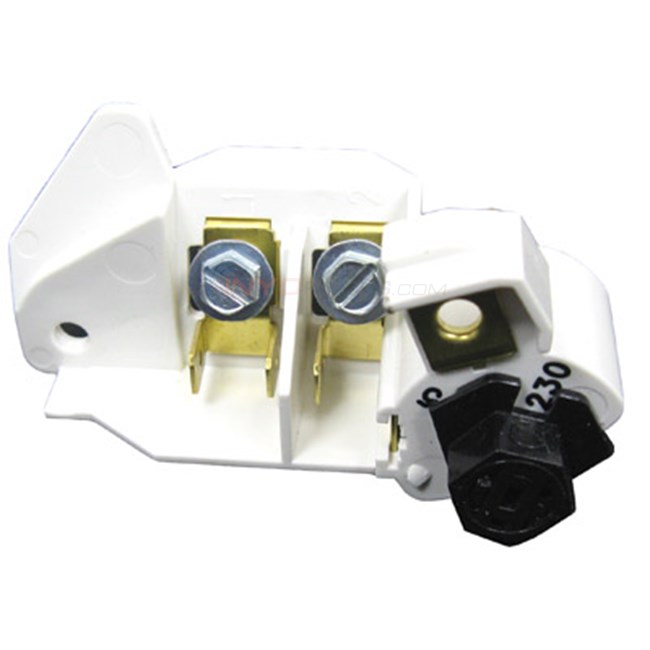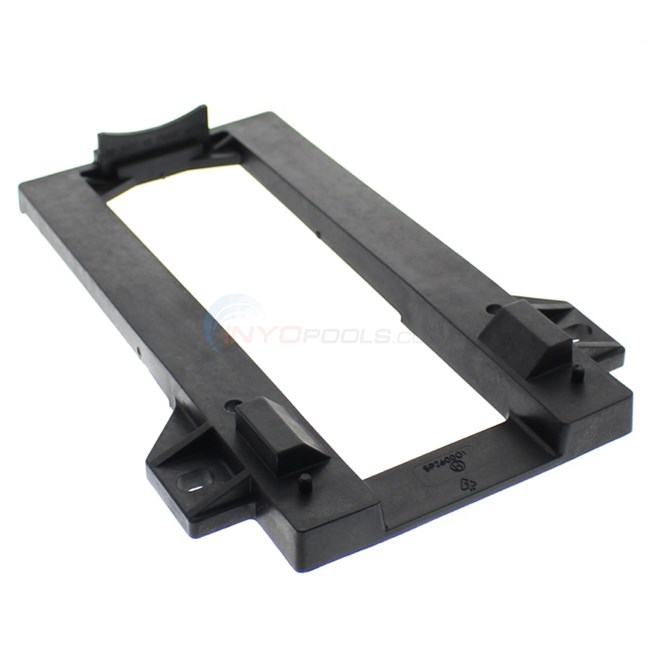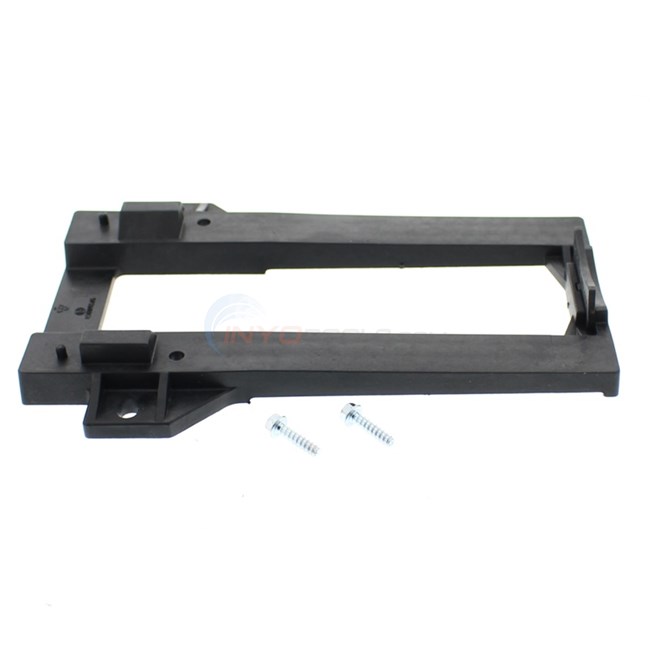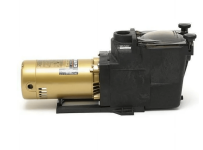The voltage is 120....here is a picture of the bottom of the motor. I've had it for 9 years. guessing I will need a new one....What is the input voltage?
Is the voltage selector switch set correctly?
Note: Do not apply 240 volts when the voltage selector switch is set to 120 or you will destroy the motor.
Rotation Direction of Pump Motor
- Thread starter Emarshbuck
- Start date
You are using an out of date browser. It may not display this or other websites correctly.
You should upgrade or use an alternative browser.
You should upgrade or use an alternative browser.
there is no voltage selector switch. It's on a 10amp, 120v circuit.Can you show the voltage selector switch?
James, you are correct. There is a voltage selector switch. It's set at 120. Your question made me look closer at the wiring compartment. I removed all the wet end portions and made sure the capacitor was wired correctly. I turned on the motor, it hummed for a few seconds, then started spinning CW with a lot of clacking noise. I turned it off, then tried to start it again. I had to spin the drive shaft manually before it would turn. I've ordered a new motor. The good news is it's Fall here in Hilton Head, very few leaves down at the moment, and the pool water is around 65F.What is the input voltage?
Is the voltage selector switch set correctly?
Note: Do not apply 240 volts when the voltage selector switch is set to 120 or you will destroy the motor.
thanks to everyone on this sight who made recommendations and insight as to what might be the problem.
Good morning. New pool pump arrived yesterday. The 9 year old one rusted out on the bottom, even though I had it sitting on a mounting foot. I realize that pool service areas are a hostile environment for motors, so I'm not surprised this happened.
Question: Would it be ok to apply a clear polymer paint to the underside of the motor? Is there some other protective way to keep moisture from away from the motor bottom?
thank you,
ed
Question: Would it be ok to apply a clear polymer paint to the underside of the motor? Is there some other protective way to keep moisture from away from the motor bottom?
thank you,
ed
- Jul 21, 2013
- 65,367
- Pool Size
- 35000
- Surface
- Plaster
- Chlorine
- Salt Water Generator
- SWG Type
- Pentair Intellichlor IC-60
Question: Would it be ok to apply a clear polymer paint to the underside of the motor?
If you believe that your coating is better then what the manufacturer put on the motor case.
Is there some other protective way to keep moisture from away from the motor bottom?
I would look to put your pump on a stand where it does not sit on the moist sandy ground and air can circulate around it. Many pumps have a stand that hold it off the ground.
Your pump has two 45's that dip the suction pipe down to its level. I suspect that there was a pump there that was raised above the ground and the suction went straight into it. This pump was placed on the ground and the 45's put in which caused your moisture corrosion problem.

- Nov 12, 2017
- 12,660
- Pool Size
- 12300
- Surface
- Plaster
- Chlorine
- Salt Water Generator
- SWG Type
- Pentair Intellichlor IC-40
Allen, is that a pic of the OP's existing pump? Geez-Louise some installers are so lazy.If you believe that your coating is better then what the manufacturer put on the motor case.
I would look to put your pump on a stand where it does not sit on the moist sandy ground and air can circulate around it. Many pumps have a stand that hold it off the ground.
Your pump has two 45's that dip the suction pipe down to its level. I suspect that there was a pump there that was raised above the ground and the suction went straight into it. This pump was placed on the ground and the 45's put in which caused your moisture corrosion problem.

@Emarshbuck, if that photo is your old pump, then yah, just get it off the ground. Pour a concrete pad if you can, or even a large paver would be better than laying it in the dirt. Does the new one have feet? With proper clearance I would say that's all you need. I wouldn't paint a brand new pump, not until the warranty expired, anyway. The new pump should be bolted down, so that it doesn't move and shake around, which stresses the plumbing. Murphy's Law states that will cause a massive leak only while you are away for a few days.
The suction-side (inlet) pipe is supposed to be a straight run. I think the rule of thumb is 10x the diameter of the pipe. So if that is a 2" pipe, the run into the pump should be at least 10" long. Longer is better. Those 45s are a hack. If looks like you'd have plenty of room to do a proper installation, one that will ensure your new pump will last quite a bit longer this time.
Many here insist on installing a pump with unions, to facilitate easy removal and replacement. You might consider that.
Edit: a better look suggests that is concrete under there. It looks a bit like sand. You could epoxy a paver to that, or with concrete glue just pour a slab-on-slab to get the new pump up to the correct level. If you pour something, you can set some stainless steel bolts into the concrete before it sets, to create a good set of mounting points. If you don't have adequate circulation under the pump that way, you could add some sort of spacers, over the bolts, that would raise the pump up a bit. SS washers would work, or you can use rubber mounts that would add some noise suppression.
Last edited:
- Jul 21, 2013
- 65,367
- Pool Size
- 35000
- Surface
- Plaster
- Chlorine
- Salt Water Generator
- SWG Type
- Pentair Intellichlor IC-60
Allen, is that a pic of the OP's existing pump? Geez-Louise some installers are so lazy.
It is in the OPs Media files.
The suction-side (inlet) pipe is supposed to be a straight run. I think the rule of thumb is 10x the diameter of the pipe.
4X to 5X pipe diameter.
But with the way VS pumps are run now at slow RPMs it really does not make a difference.
- Nov 12, 2017
- 12,660
- Pool Size
- 12300
- Surface
- Plaster
- Chlorine
- Salt Water Generator
- SWG Type
- Pentair Intellichlor IC-40
Google "pool pump rubber mounts" and you'll see all sorts of solutions that would raise your pump up and give you some suppression at that same time.
- Nov 12, 2017
- 12,660
- Pool Size
- 12300
- Surface
- Plaster
- Chlorine
- Salt Water Generator
- SWG Type
- Pentair Intellichlor IC-40
Thanks. I wrote the wrong formula but did the math right? It's still about a 10" run for good measure. And yes, pump's might most often run at lower RPMs, but not necessarily so. Priming and high-speed skimming, solar panels, some vacuum systems, etc, all make use of higher RPMs. Either way, adhering to owner manual installation instructions is a good way to ensure top performance and no hassles during warranty claims. This from a Pentair owner manual, @Emarshbuck, refer to your new pump's manual for best practices.4X to 5X pipe diameter.
But with the way VS pumps are run now at slow RPMs it really does not make a difference.

Thanks to every one for all the replies. I do have the mounting foot and it has been under the existing motor which burnt out. The wet end does sit about a 1/2" on the ground. The old motor has rusted out just due to the rain splashing up off the ground under it. it did last 9 years. I will be installing a cover over the service yard soon.
Last question, I hope. When the impeller is lying flat with the impeller hub on top, which direction does the spring seal assembly face when it is installed on the impeller hub? The flat black washer side up, (with the #'s 109-19) or the side with the raised "cup?"
thanks again,
ed
Last question, I hope. When the impeller is lying flat with the impeller hub on top, which direction does the spring seal assembly face when it is installed on the impeller hub? The flat black washer side up, (with the #'s 109-19) or the side with the raised "cup?"
thanks again,
ed
- May 3, 2007
- 18,088
- Pool Size
- 20000
- Surface
- Plaster
- Chlorine
- Salt Water Generator
- SWG Type
- Hayward Aqua Rite (T-15)
The part on the right with the ceramic seal goes into the motor mounting plate and the spring side on the left toward the impeller. Avoid touching either the ceramic or carbon surfaces of the seal.
Impeller
 Motor Mounting Plate
Motor Mounting Plate
Impeller

- May 3, 2007
- 18,088
- Pool Size
- 20000
- Surface
- Plaster
- Chlorine
- Salt Water Generator
- SWG Type
- Hayward Aqua Rite (T-15)
A bad seal leaking could also rust the bottom of a pump motor. Probably much more likely than the rain since pool water has higher salt content and bad seals are not uncommon.
James,James, you are correct. There is a voltage selector switch. It's set at 120. Your question made me look closer at the wiring compartment. I removed all the wet end portions and made sure the capacitor was wired correctly. I turned on the motor, it hummed for a few seconds, then started spinning CW with a lot of clacking noise. I turned it off, then tried to start it again. I had to spin the drive shaft manually before it would turn. I've ordered a new motor. The good news is it's Fall here in Hilton Head, very few leaves down at the moment, and the pool water is around 65F.
thanks to everyone on this sight who made recommendations and insight as to what might be the problem.
Your questions about the voltage selector switch had me checking it again. I've attached a screen shot of the electrical portion of my old motor. You will see that the selector switch is turned to 120, leaving the 240 position exposed. When I checked the breaker box, I have a Square D 60amp 240 V breaker. Going from the breaker box to the motor are one red, one black, and one green wire.
I ran a 120v line to the motor on my workbench from an off/on switch. Turned it on, the motor ran perfect. Attached on the Haywood pump parts, including the impeller. The motor just hummed. I could turn the impeller, but it would not spin on it's own. Took off the impeller, motor ran like a champ. I think I have a 240V wiring setup.
thoughts,
thank you,
ed marshall

Thread Status
Hello , This thread has been inactive for over 60 days. New postings here are unlikely to be seen or responded to by other members. For better visibility, consider Starting A New Thread.









